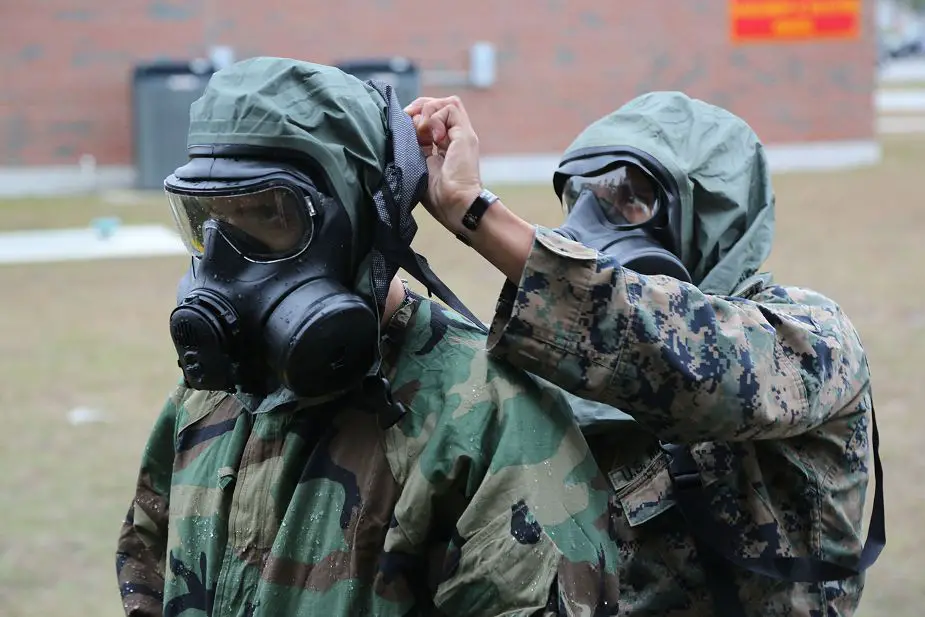U.S. Marines and sailors train to combat modern CBRN threats
U.S. Marines and Sailors with U.S. Marine Corps Forces, Special Operations Command conducted a countering weapons of mass destruction course for service members to learn to combat, adapt to and overcome chemical and biological contaminations, at Marine Corps Base Camp Lejeune, N.C., from 5 to 8 December 2017.

U.S. Marines and Sailors with U.S. Marine Corps Forces, Special Operations Command, demonstrate proper removal of a gas mask from a simulated chemical contact victim while training for the medical management of chemical and biological causalties during an exercise at Stone Bay on Marine Corps Base Camp Lejeune, N.C., Dec. 6, 2017. (Picture source U.S. Marines)
Chemical, biological, radiological and nuclear defense (CBRN defense or CBRNE defense also called NBC in the past) is protective measures taken in situations in which chemical, biological, radiological or nuclear warfare (including terrorism) hazards may be present. CBRN defense consists of CBRN passive protection, contamination avoidance and CBRN mitigation.
Today CBRN defense defense continues to be an important part for all armed forces in the world. During this training, U.S. Marines and Sailors learned to detect signs and symptoms of a weapons employment, how to don protective clothing and how to treat victims without contaminating themselves in the process. Service members also studied past cases of chemical and biological incidents, in order to evaluate what could or could not have been done differently to improve the medical outcome.
Common chemical weapons symptoms can include vomiting, convulsions, skin irritation, headaches, and respiratory difficulty. Biological symptoms tend to present themselves as flu-like, making it difficult to differentiate between a biological weapon and a common cold. It is imperative for the Marines and Sailors to be actively cognitive of these signs and symptoms to mitigate further contamination and expedite triage and care for victims.
Marines conduct biennial chemical, biological, radiological and nuclear (CBRN) training as part of their required training. MARSOC (Marine Corps Special Operations Command Recruiting Information and Contacts) wanted to identify gaps in the current requirement, so they could develop sustainable training solutions and prepare deploying teams with this knowledge. While the course reinforced basic skills learned in CBRN training, CWMD (Countering Weapons of Mass Destruction) focused more on chemical and biological threats and how to counteract their effects with appropriate medical aid.
Potential adversaries of the United States and other countries in the world continue to pursue weapons of mass destruction (WMD) to enhance their international influence and achieve greater strategic leverage against U.S. advantages and its allies. Increased access to expertise, materials, and technologies heightens the risk that these adversaries will seek, acquire, proliferate, and employ WMD. Furthermore, instability in states pursuing or possessing WMD or related capabilities could lead to dangerous WMD crises.
The U.S. Department of Defense Strategy for Countering Weapons of Mass Destruction seeks to ensure that the United States and its allies and partners are neither attacked nor coerced by actors with WMD. For all these reasons, U.S. Marines and Sailors continue to train in order to use and know their individual CBRN protection gear and executed reaction drills for numerous scenarios regarding a chemical weapons attack, including decontamination of chemically-contaminated patients. They also analyzed steps and procedures to take when handling biological weapons and what treatments or medicine are available to control these biological threats.


























